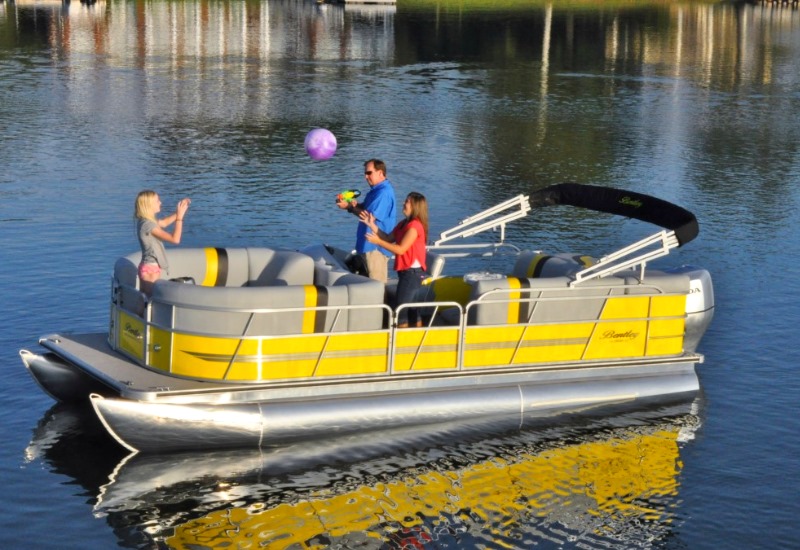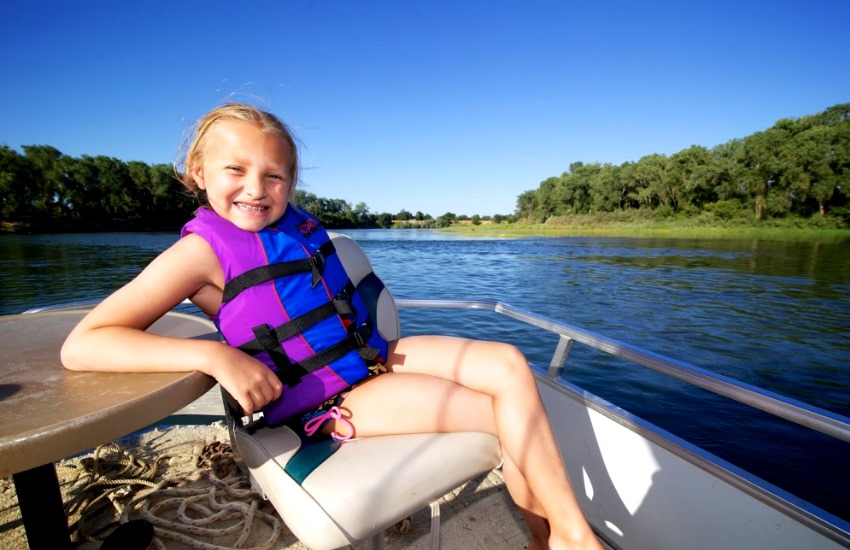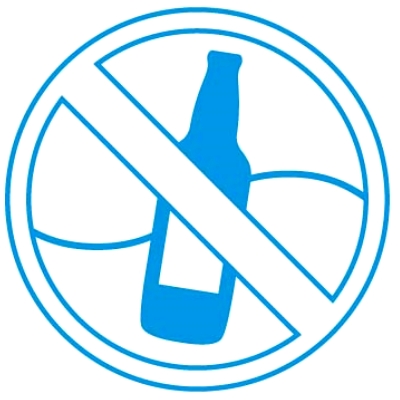
Boating Safety
Who Can Operate a Boat?

Those Less Than 12 Years of Age:
- May not operate any vessel over 16 feet in length.
- May legally operate a vessel under 16 feet in length which is either non-motorized or powered by a motor of 30 horsepower or less only if they are accompanied by a competent adult.
Those 12 Through 15 Years of Age
May legally operate any vessel less than 16 feet in length, including a PWC only if they:- Have passed a boat education course approved by the Department of Natural Resources, OR
- Are accompanied by a competent adult May not legally operate any vessel over 16 feet in length.
Those 16 Years of Age or Older:
- May operate any boat on the waters of Georgia if they have proper identification on-board
- All operators born after January 1, 1998 must have passed a boater education course approved by the Department of Natural Resources and have card on board to operate any vessel.
Those 18 Years of Age or Older:
- "Competent Adult" means a person of age 18 or older who is not under the influence of alcohol or drugs and who is carrying proper identification.
- "Proper Identification" means a drivers license (or legible copy) or any other government issued identification that contains a description of the person, a photograph and birth date.
Unlawful And Dangerous Operation
Reckless Operation of a Boat or PWC is the Disregard for the Safety of Persons or Property

- Water skiing or dropping water skiers close to swimmers, launching ramps or other boaters
- Jumping the wake of another boat within 100 feet of that boat or buzzing other boats
- Causing damage from the wake of your boat
- Improper Distance is not maintaining a proper distance while operating a boat or PWC or towing a person on water skis or any similar device.
Specifically, it is Illegal to:
- Operate a boat or PWC or tow a person on water skis or any similar device at greater than idle speed within 100 feet of a:
- Moored or anchored boat or any boat adrift
- Dock, pier or bridge
- Person(s) in the water
- Shoreline adjacent to a full - or part-time residence
- Public park or beach or a swimming area
- Marina, restaurant or other public use area
- Run around or within 100 feet of another boat at greater than idle speed unless you are overtaking or meeting the other boat in compliance with the rules for encountering other boats
- Follow closely behind another boat, jump the wake of the other boat or change course or direction in order to jump the wake of another boat
- "Idle Speed" means to operate your boat or PWC at the slowest speed at which it is still possible to maintain steering control.
Failure to Regulate Speed is Operating a Boat or PWC at Speeds that May Cause danger, Injury, Damage, or Unnecessary Inconvenience either Directly or by the Effect of the Boat's Wake. It is Illegal to:
- Fail to regulate your speed near swimming areas, docks, moored boats and boats engaged in fishing
- Operate a boat or PWC faster than is reasonable and prudent under the conditions (weather, boat traffic)
- Overloading is loading the boat beyond the recommended capacity shown on the capacity plate installed by the boat manufacturer.
- Riding on Bow or Gunwale is illegal if the boat is not equipped with a railing or some other retaining device. As a boat operator, you are prohibited from allowing your passengers to ride on the bow or gunwale.
Obstructing Navigation
It is illegal to:- Obstruct a pier, wharf, boat ramp or access to any facility
- Anchor a boat in the traveled portion of a river or channel that will prevent or interfere with any other passing boat
- Moor or attach a boat to a buoy, beacon, light, or any other navigational aid placed on public waters by proper authorities. Also, it is illegal to move, displace, tamper with, damage, or destroy any navigational aid
Personal Flotation Devices

When preparing to go out on a boat or a PWC, the operator must check that the legally required equipment is onboard:
All boats must have at least one Type I, II, III or V personal flotation device that is U. S. Coast Guard approved, wearable and of the proper size for each person onboard. Sizing for PFDs is based on body weight and chest size. Type V PFDs are acceptable only when worn and securely fastened.
As of May 15, 2013, Georgia law requires all children under 13 years of age to wear a U. S. Coast Guard approved PFD while onboard any moving boat. This law does not apply when the child is in a fully enclosed cabin.
One Type IV (throwable device) U. S. Coast Guard approved PFD must be onboard all boats 16 feet or more in length, except for canoes and kayaks. Must be immediately accessible to throw out to someone quickly.
One Type V may be substituted for any other type if it is specifically approved by the U. S. Coast Guard for the activity at hand. Type V PFDs may not be substituted on children weighing less than 90 lbs.
Each person riding on a PWC must wear a U. S. Coast Guard approved Type I, II, III or V personal flotation device. Inflatable Type V PFDs are not approved for use on PWC.
All PFDs must be in good and serviceable condition and must be readily accessible.
Alcohol And Drugs
Just remember this simple rule: Don't drink and boat!
The Georgia Boat Safety Act prohibits anyone from boating under the influence (BUI) — that is, operating any boat, sailboat, PWC, water skis, sailboard or similar device while intoxicated.
It is also unlawful for the owner of a boat or PWC to allow anyone else to operate their boat or PWC while that person is under the influence of alcohol or drugs.
Georgia boating law states
- It is illegal for those under the age of 21 years to operate a boat or PWC if their blood alcohol level is 0.02 or more
- Those 21 years of age or older are considered to be under the influence, and may not operate a boat or PWC, if their blood alcohol level is 0.08 or more or if drugs are detected.
The Georgia Boat Safety Act Sets these Penalties:
- Those arrested for boating under the influence may lose their privilege to operate a boat or PWC until they successfully complete a DUI Alcohol or Drug Use Risk Reduction Program approved by the Department of Driver Services. They will also be charged with a misdemeanor punishable by fines up to $1,000 and/or prison time up to one year.
- By operating a boat or PWC on Georgia waters, you have consented to be tested for alcohol or drugs if requested by a law enforcement official. If you refuse to be tested, you will lose your privilege to operate a boat or PWC for up to 1 year and your refusal will be evidence against you at a trial.
- A person found operating a boat or PWC under the influence while a child under the age of 14 years is on board, is also guilty of the separate charge of endangering a child.

What is a Hull Identification Number (HIN)?
The Hull Identification Number (HIN) is a 12 or 14 character serial number that uniquely identifies a boat. The HIN is analogous to a VIN on a car. All boats manufactured or imported on or after November 1, 1972, must bear a HIN, and this HIN must be identified during the boat registration process. Vessels manufactured or imported before 1972 are EXEMPT because they often do not have a HIN.
The HIN is found on a metal or plastic plate, typically on the transom of the boat, usually on the right starboard (right) side of the transom within two inches of the top of transom, gunwale, or hull/deck joint, whichever is lowest. On vessels without transoms, or impractical to use transoms, the HIN is usually affixed to the starboard (right) outboard side of hull, aft, within one foot of the stern and within two inches of the top of the hull side, gunwale or hull/deck joint, whichever is lowest. On catamarans and pontoon boats with replaceable hulls, the HIN is usually affixed to the aft crossbeam, within one foot of the starboard (right) hull attachment.
Information obtained from Georgia Department Of NaturalResources
